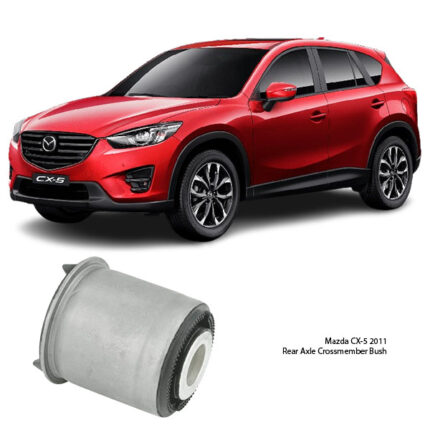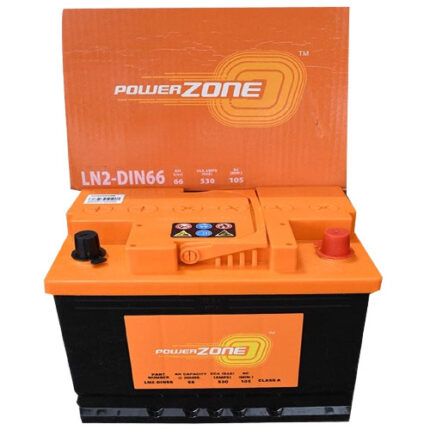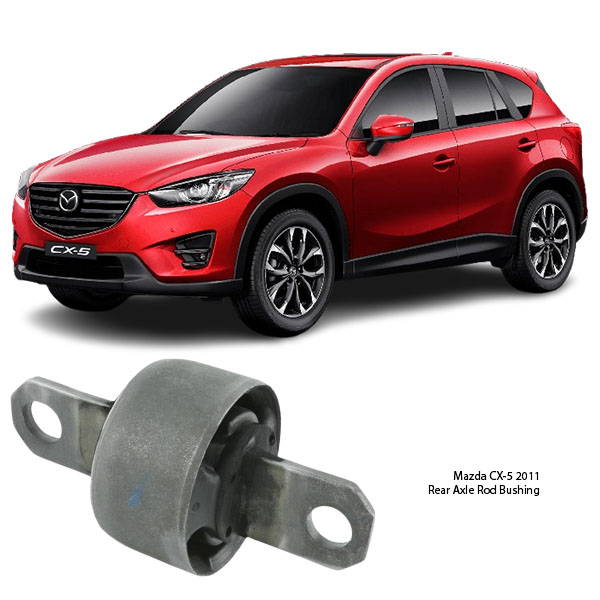-13%
Get Mazda CX-5 2011 Rear Axle Rod Bushing mzab-152 in Kenya
The rear axle rod bushing is a crucial component of a vehicle’s suspension system. It serves as a cushion between the rear axle rods (or trailing arms) and the chassis, absorbing vibrations and ensuring proper alignment of the rear wheels. While often overlooked, this small yet significant part plays a vital role in maintaining ride comfort, handling stability, and overall suspension performance.
In this comprehensive guide, we will explore the function of the rear axle rod bushing, its benefits, symptoms of failure, causes of wear, maintenance practices, and replacement tips.
What is a Rear Axle Rod Bushing?
A rear axle rod bushing is a cylindrical component made of rubber, polyurethane, or other flexible materials, which is housed within the rear axle rods (trailing arms). These bushings help connect the axle rods to the vehicle’s frame while allowing controlled movement to absorb shocks and reduce metal-to-metal contact.
The rear axle rods, also known as trailing arms, control the forward and backward motion of the rear axle, ensuring proper wheel alignment. The bushings within these rods help maintain stability by preventing excessive movement and minimizing vibrations caused by road irregularities.
Functions of a Rear Axle Rod Bushing
1. Absorbing Shocks and Vibrations
One of the primary functions of the rear axle rod bushing is to absorb road shocks and vibrations, reducing the impact transmitted to the chassis. This helps improve ride comfort, especially when driving over rough or uneven surfaces.
2. Ensuring Proper Rear Axle Alignment
The rear axle rod bushing keeps the axle properly aligned with the vehicle’s chassis. This alignment is essential for maintaining straight-line stability and preventing excessive wear on tires and suspension components.
3. Reducing Noise and Harshness
By acting as a cushion between metal components, the bushing reduces noise, vibration, and harshness (NVH). Without a functioning bushing, metal-to-metal contact would create loud clunking or knocking noises, making the ride unpleasant.
4. Enhancing Suspension Longevity
Bushings play a protective role in the suspension system by reducing excessive movement of the rear axle rods. This prevents premature wear on other suspension components, such as control arms, shocks, and ball joints, thereby extending their lifespan.
5. Improving Handling and Stability
A worn or damaged bushing can lead to instability, making the vehicle harder to control, especially during braking and cornering. Properly functioning bushings maintain the structural integrity of the suspension, allowing for more precise handling.
Types of Rear Axle Rod Bushings
1. Rubber Bushings
Rubber bushings are the most common type and are typically used in OEM (original equipment manufacturer) applications. They provide excellent vibration damping but tend to wear out faster, especially under high loads or harsh driving conditions.
2. Polyurethane Bushings
Polyurethane bushings are more durable than rubber and offer better resistance to wear, heat, and chemicals. They provide improved handling but may result in a slightly stiffer ride, as they transmit more road feedback to the chassis.
3. Solid (Metal) Bushings
Some high-performance or racing applications use solid bushings made of metal or hybrid materials. These provide maximum rigidity and precision but sacrifice comfort, as they do not absorb vibrations as effectively as rubber or polyurethane.
Common Symptoms of a Worn or Failing Rear Axle Rod Bushing
1. Increased Noise and Vibrations
A worn bushing will no longer effectively dampen vibrations, leading to increased road noise and a rougher ride. You may hear clunking or knocking sounds, especially when going over bumps or making turns.
2. Unstable or Loose Rear End
If the bushing deteriorates, it can cause excessive movement in the rear axle, making the vehicle feel loose or unstable, particularly during acceleration, braking, or cornering.
3. Uneven or Rapid Tire Wear
A failing bushing can cause misalignment in the rear suspension, leading to uneven tire wear. This may result in the inner or outer edges of the tires wearing out more quickly than the center.
4. Poor Handling and Steering Response
A worn bushing can lead to poor suspension geometry, making the vehicle less responsive to steering inputs. You may notice increased body roll or difficulty maintaining a straight line at higher speeds.
5. Rear Suspension Sagging or Misalignment
If the bushings are completely worn out, the rear suspension may sag or become misaligned, affecting the vehicle’s overall stance and handling characteristics.
Causes of Rear Axle Rod Bushing Wear
1. Age and Normal Wear
Over time, bushings naturally degrade due to exposure to heat, road debris, and constant movement. Rubber bushings tend to dry out, crack, and lose elasticity as they age.
2. Harsh Driving Conditions
Frequent driving on rough terrain, potholes, and speed bumps can accelerate bushing wear. Aggressive driving, such as hard cornering or sudden braking, also puts extra stress on the suspension components.
3. Exposure to Chemicals and Moisture
Road salt, oil, and other chemicals can break down the rubber material in bushings, leading to premature deterioration. Moisture exposure can also contribute to corrosion of the metal components surrounding the bushings.
4. Overloading the Vehicle
Carrying excessive weight places additional stress on the rear suspension, causing bushings to compress and wear out faster than normal.
5. Poor Installation or Low-Quality Replacements
Using low-quality aftermarket bushings or improper installation can lead to premature failure. Always opt for high-quality bushings that match the vehicle’s specifications.
Maintenance and Replacement Tips
1. Regular Inspection
Check the condition of the rear axle rod bushings during routine maintenance. Look for cracks, tears, or signs of excessive wear. If you hear unusual noises from the rear suspension, inspect the bushings for damage.
2. Lubrication (For Polyurethane Bushings)
Unlike rubber bushings, polyurethane bushings require lubrication to prevent squeaking and reduce friction. Use a silicone-based lubricant to ensure smooth operation.
3. Timely Replacement
If a bushing is significantly worn, replace it immediately to avoid further suspension damage. Neglecting a failing bushing can lead to costly repairs, including the replacement of axle rods or control arms.
4. Professional Installation vs. DIY
While replacing bushings is possible for experienced mechanics, it often requires special tools such as a hydraulic press. If you are not confident in performing the replacement, seek professional assistance to ensure proper alignment and secure installation.
5. Choosing the Right Replacement Bushings
- OEM Bushings: Best for maintaining factory ride quality.
- Polyurethane Bushings: Ideal for performance improvements and durability.
- Solid Bushings: Suitable for track or racing applications where precision is more important than comfort.
Conclusion
The rear axle rod bushing is an essential part of the vehicle’s suspension system, providing stability, reducing vibrations, and ensuring proper wheel alignment. Despite its small size, its condition has a direct impact on handling, comfort, and the lifespan of other suspension components.
Regular inspections, proper maintenance, and timely replacement of worn bushings can prevent costly repairs and improve your vehicle’s ride quality. Whether you choose rubber, polyurethane, or solid bushings, selecting the right material and ensuring correct installation will keep your suspension system performing optimally for years to come.
Follow us on Facebook for more parts.




Reviews
Clear filtersThere are no reviews yet.